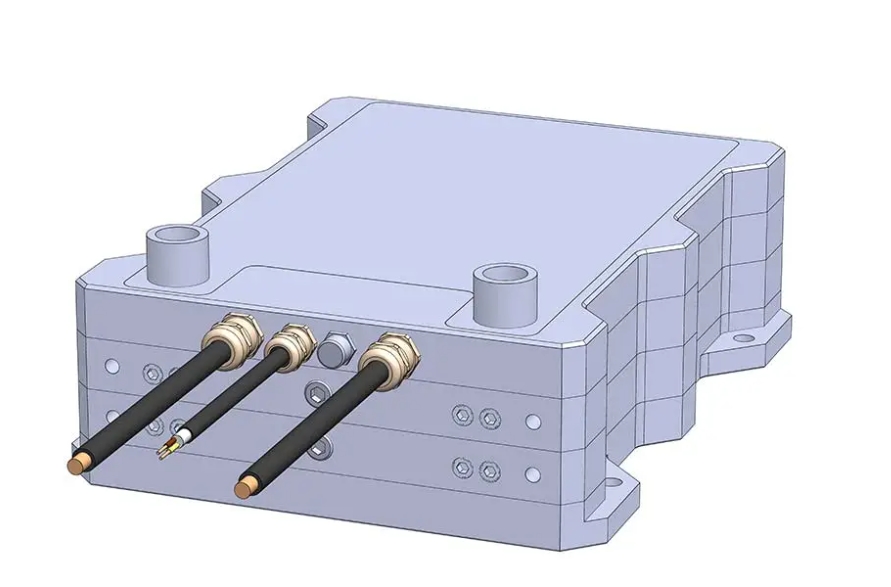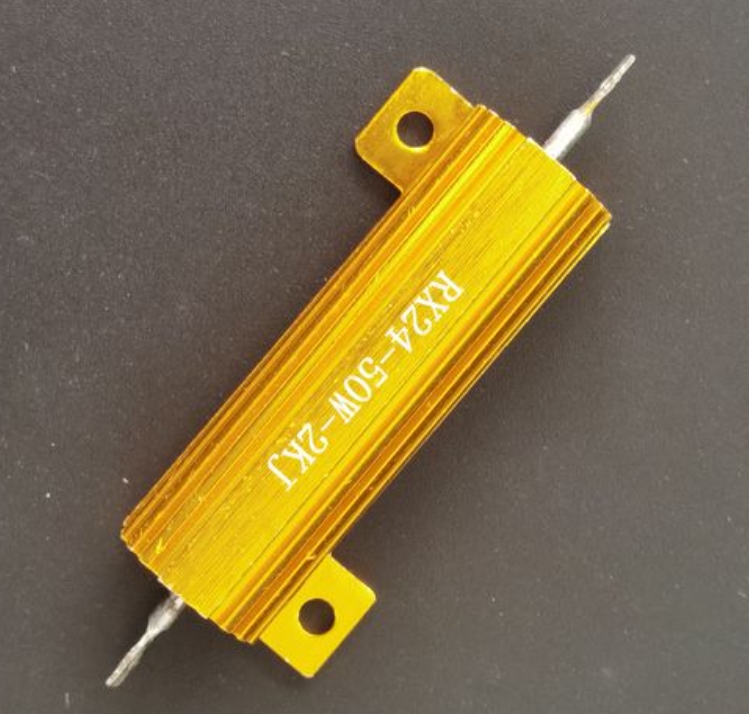Table of Contents
What is a Load Resistor
A load resistor is a resistive element in a circuit that is used to consume electrical energy or simulate an actual load and is mainly used to simulate or replace an actual load in order to test or adjust the performance of a circuit. It can be the equivalent resistance of the actual load (e.g., light bulb, motor, etc.), or it can be a specially designed resistor for absorbing excess electrical energy or acting as a buffer or brake.
Characteristics and Classification
Non-inductive Performance: Load resistors are usually required to be non-inductive or ultra-low inductance to avoid oscillations when absorbing electrical energy and to protect other components in the circuit.
Heat Dissipation Performance: Since load resistors generate a large amount of heat when consuming electrical energy, they require a good heat dissipation design, usually using heat-resistant materials and metal cases.
There are two main types of load resistors: fixed load resistors and variable load resistors.
Fixed Load Resistors: These resistors have a fixed resistance value and are typically used for applications that require a specific resistance. They have various power ratings and can handle a specific amount of current without overheating.
Variable Load Resistors: Also known as varistors or potentiometers, these resistors have adjustable resistance values. They are used in applications where the resistance needs to be changed manually, such as volume controls or dimmer switches.
Load resistors come in different sizes and shapes depending on the specific application and requirements.
How Load Resistors Work

Load resistors play a vital role in circuits by regulating voltage, controlling current, and dissipating heat. Understanding how load resistors work is essential for anyone working in electronics or electrical engineering.
Fundamentals of Resistance
Resistance is a fundamental property of materials that determines how easily current flows through them. It is measured in ohms (Ω) and denoted by the symbol “R”. The resistance of a material depends on factors such as its length, cross-sectional area, and resistivity.
According to Ohm’s law, the current flowing through a conductor is directly proportional to the voltage applied to the conductor and inversely proportional to its resistance. This relationship is expressed by the equation I = V/R, where I denotes current, V denotes voltage, and R denotes resistance.
The Role of Load Resistors in Circuits
Load resistors serve several important functions in circuits, including voltage regulation, current control, and heat dissipation.
Voltage Regulation
Load resistors are typically used to regulate the voltage in a circuit. They are connected in parallel with a load, such as an LED or motor, to ensure that the voltage across the load remains within a specific range. By adjusting the resistance of a load resistor, the voltage drop across its terminals can be controlled, thus regulating the voltage supplied to the load.
CURRENT CONTROL
Load resistors also help to control the current in a circuit. By adjusting the resistance value, the current through the load resistor can be manipulated. This is especially useful in situations where the current needs to be limited or adjusted to match the circuit or load requirements.
Heat Dissipation
When current flows through a resistor, it generates heat due to the resistance encountered. Load resistors are designed to handle a specific power rating, which determines their ability to dissipate heat. By selecting a load resistor with the proper power rating, you can prevent excessive heat buildup and ensure the safe operation of your circuit.
Load resistors are commonly used in applications where excess voltage or current needs to be dissipated as heat, such as automotive LED lighting systems or high-power electronics.
Understanding how load resistors work is critical to selecting the right resistor for a particular application and ensuring proper circuit operation. By considering factors such as resistance value, power rating, and temperature coefficient, you can select the load resistor that best suits your needs.
Relationship to the internal resistance of the power supply
In a circuit, the load resistance and the internal resistance of the power supply together determine the circuit voltage. According to Kirchhoff’s law, the relationship between the end-of-circuit voltage U and the electric potential E of the power supply, the internal resistance r of the power supply, and the load resistance R is:
U=E-Ir where I is the circuit current. When the load resistance R decreases, the end-of-circuit voltage U also decreases.
Is Load Resistor Safe
Load resistor plays the role of current limiting and voltage dividing in a circuit, and its safety mainly depends on the following aspects:
Current limiting: the rated current of the load resistor should be greater than or equal to the maximum current that may pass through the circuit, in order to prevent the resistor from overheating or even burning out. For example, in a circuit where the load resistor’s current rating is less than the actual current in the circuit, the resistor may overheat and present a safety hazard.
Working environment: The working environment temperature, humidity, and other conditions of the load resistor will also affect its safety. High temperature, humidity, and other harsh environments will accelerate the aging and damage of the resistor, which may lead to circuit failure or short circuits.
Material and Quality: The material and quality of the resistor directly affects its durability and safety. High-quality resistors are usually made of high-temperature resistant and low-inductive materials that can work stably in harsh environments, while low-quality resistors are easily damaged and may cause safety issues.
Design and application: When designing a circuit, the resistance value and power of the resistor should be selected appropriately to ensure that it will not exceed its rated value under operating conditions. In addition, proper installation and maintenance are key to ensuring the safety of the resistor.

How to Install a Load Resistor
The load resistor should be connected to the output of the circuit, which is where the circuit provides the signal output. This minimizes signal distortion and improves the accuracy of the circuit. If the load resistor is connected to the input, it will result in signal distortion and reduced circuit accuracy due to other resistors and resistor networks on the input.
However, in some cases, the load resistor can be connected to other locations. For example, in a power supply circuit, the load resistor should be connected to the power supply output to measure the output voltage and current of the power supply. In an amplifier circuit, the load resistor should be connected to the output to provide a suitable load and maximize the output power of the amplifier. In AC circuits, load resistors are sometimes connected to the midpoint to provide the proper voltage and current range.
In summary, the specifics and requirements of the circuit need to be considered when choosing where to interface the load resistor to achieve optimum signal transmission and circuit results.
How to Calculate Load Resistance Value
R = ρL/S (where ρ denotes the resistivity of the resistor, which is determined by its nature, L denotes the length of the resistor, and S denotes the cross-sectional area of the resistor). Large power supply equipment, medical equipment, electrical instruments and equipment, and other products in use often need to absorb some of the excess power generated. The high-power dissipation resistor used here is the load resistor. Load resistors are also known as discharge resistors, braking resistors, brake resistors, and absorber resistors due to their special role. These resistors have high power and are generally non-inductive power resistors. Non-inductive value, ultra-low inductance is an important requirement for these products, in the process of absorbing power to discharge excess power, if the inductance of the resistor is too large, it is easy to produce shock, other components in the circuit, the power supply and the equipment itself to produce harm, and even directly burned many internal devices.
Application Scenarios
Testing and Debugging: In-circuit debugging or performance testing, load resistors are used to simulate actual loads and ensure circuit stability under different load conditions.
Energy Absorption: In equipment such as power supplies or motors, load resistors are used to absorb excess electrical energy and prevent circuit overload or damage.
Mode Selection: Electronic loads can work in constant current (CC), constant voltage (CV), and constant resistance (CR) modes to adapt to different testing needs.
Summary
Load resistor is not only an important component in circuit design but also the key to understanding the circuit working principle. By reasonably selecting load resistors, the circuit performance can be optimized to improve the stability and safety of the equipment. Its design and application need to comprehensively consider the non-inductive performance, heat dissipation performance, and the needs of specific application scenarios.
